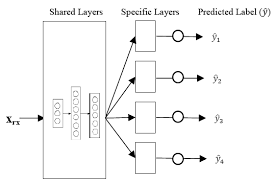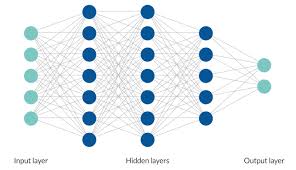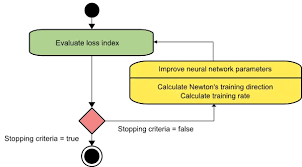Geoffrey Hinton and the Evolution of Deep Learning
Geoffrey Hinton is often referred to as one of the “Godfathers of Deep Learning,” a title well-deserved due to his pioneering contributions to the field of artificial intelligence (AI). Over the decades, his work has laid the foundation for many of the advancements we see today in AI technologies.
The Early Days
Born in 1947 in Wimbledon, London, Geoffrey Hinton’s journey into computer science began with a background in experimental psychology. He earned his Ph.D. from the University of Edinburgh in 1978, focusing on artificial intelligence. His early work revolved around neural networks, a concept that was not widely accepted at that time due to technological limitations.
Pioneering Neural Networks
In the 1980s, Hinton co-authored a seminal paper on backpropagation with David Rumelhart and Ronald J. Williams. This algorithm became crucial for training multi-layer neural networks and is still used today as a fundamental component in deep learning systems.
The Rise of Deep Learning
Deep learning is a subset of machine learning that mimics the workings of the human brain in processing data and creating patterns for decision making. Geoffrey Hinton’s research has been instrumental in reviving interest in neural networks through deep learning techniques.
In 2012, Hinton and his students Alex Krizhevsky and Ilya Sutskever won the ImageNet competition by using a deep convolutional neural network called AlexNet. This victory demonstrated that deep learning could achieve unprecedented accuracy levels and sparked widespread interest across academia and industry.
Impact on Technology
Hinton’s work has profoundly impacted various sectors including healthcare, autonomous vehicles, natural language processing, and more. Companies like Google have invested heavily in deep learning technologies inspired by his research. In fact, Google acquired Hinton’s company DNNresearch Inc., further cementing his influence on modern AI development.
A Visionary Leader
Beyond his technical contributions, Geoffrey Hinton is also known for mentoring many leading figures in AI today. His commitment to advancing AI while considering ethical implications has made him not just an innovator but also a guiding force for responsible AI development.
The Future of Deep Learning
The field continues to evolve rapidly with new architectures like transformers pushing boundaries even further. Yet, much of this progress can be traced back to foundational work done by pioneers like Geoffrey Hinton who dared to explore uncharted territories when few believed it was possible.
Geoffrey Hinton: The Visionary Behind Deep Learning’s Transformative Impact on AI
- Pioneered backpropagation algorithm for training neural networks
- Revived interest in neural networks through deep learning techniques
- Led to significant advancements in image recognition and computer vision
- Inspired the development of powerful AI models like convolutional neural networks
- Contributed to the democratization of AI research and applications
- Mentored and influenced a generation of AI researchers and practitioners
Challenges in Geoffrey Hinton’s Deep Learning: Complexity, Data Dependency, and More
Pioneered backpropagation algorithm for training neural networks
Geoffrey Hinton’s pioneering work on the backpropagation algorithm revolutionized the training of neural networks, making it a cornerstone of modern deep learning. Before backpropagation, training multi-layer neural networks was computationally expensive and inefficient, limiting their practical application. Hinton, along with his collaborators, developed this algorithm to efficiently calculate gradients needed to update network weights during training. This breakthrough allowed for the effective training of deep neural networks by enabling them to learn complex patterns from large datasets. The backpropagation algorithm has since become an essential tool in the field of artificial intelligence, underpinning many of the advancements seen in image recognition, natural language processing, and other AI applications today.
Revived interest in neural networks through deep learning techniques
Geoffrey Hinton’s work in deep learning has been pivotal in reviving interest in neural networks, which had previously fallen out of favor due to limitations in computational power and data availability. By developing advanced techniques such as backpropagation and deep convolutional neural networks, Hinton demonstrated the potential of these models to achieve remarkable accuracy in tasks like image and speech recognition. His groundbreaking contributions, particularly the success of AlexNet in the 2012 ImageNet competition, showcased the practical applications of deep learning and reignited enthusiasm among researchers and industry leaders. This resurgence has led to significant advancements across various fields, including artificial intelligence, healthcare, and autonomous systems, establishing neural networks as a cornerstone of modern AI development.
Led to significant advancements in image recognition and computer vision
Geoffrey Hinton’s groundbreaking work in deep learning has led to significant advancements in image recognition and computer vision. By pioneering the use of deep neural networks and convolutional neural networks, Hinton’s research has revolutionized how machines perceive and interpret visual data. These advancements have enabled remarkable progress in tasks such as object detection, image classification, facial recognition, and even autonomous driving systems. Hinton’s contributions have not only pushed the boundaries of what is possible in artificial intelligence but have also opened up new possibilities for enhancing various real-world applications that rely on accurate and efficient visual processing algorithms.
Inspired the development of powerful AI models like convolutional neural networks
Geoffrey Hinton’s groundbreaking work in deep learning has been pivotal in inspiring the development of powerful AI models, particularly convolutional neural networks (CNNs). These models have revolutionized how machines interpret visual data, enabling significant advancements in image and video recognition. Hinton’s insights into neural network architectures laid the groundwork for CNNs to excel in tasks that require understanding complex patterns and features within images. This innovation has not only enhanced computer vision applications but also paved the way for breakthroughs in various fields such as healthcare, where CNNs are used for medical imaging diagnostics, and autonomous vehicles, which rely on visual data processing for navigation. Hinton’s influence on CNN development continues to drive progress in AI, demonstrating his lasting impact on technology.
Contributed to the democratization of AI research and applications
Geoffrey Hinton’s contributions to deep learning have significantly advanced the democratization of AI research and applications, making cutting-edge technology more accessible to a broader audience. By developing foundational algorithms and techniques, such as backpropagation and deep neural networks, Hinton enabled researchers and developers worldwide to build upon his work without needing extensive resources. This has led to a proliferation of open-source tools and frameworks that empower individuals and smaller organizations to participate in AI innovation. As a result, breakthroughs in AI are no longer confined to well-funded tech giants or academic institutions but are now within reach for enthusiasts and startups alike, fostering a more inclusive and diverse landscape in the field of artificial intelligence.
Mentored and influenced a generation of AI researchers and practitioners
Geoffrey Hinton has had a profound impact on the field of artificial intelligence by mentoring and influencing a generation of AI researchers and practitioners. His role as a teacher and guide has extended beyond his groundbreaking research, as he has shaped the careers of many leading experts in AI today. Through his work at institutions like the University of Toronto and collaborations with industry giants such as Google, Hinton has fostered an environment that encourages innovation and exploration in deep learning. His students and collaborators have gone on to make significant contributions to AI, further advancing the field and expanding its applications across various industries. By instilling a rigorous approach to research and an openness to new ideas, Hinton’s influence continues to drive progress in artificial intelligence, ensuring that his legacy endures through the achievements of those he has inspired.
Complexity
One significant drawback of Geoffrey Hinton’s deep learning models is their inherent complexity, which can pose a challenge for developers and researchers alike. These models often involve intricate architectures and algorithms that demand specialized knowledge and expertise to develop and interpret effectively. The complexity of deep learning systems can hinder their accessibility to a broader audience, limiting the potential for widespread adoption and understanding in various fields of application.
Data Dependency
One significant drawback of Geoffrey Hinton’s deep learning approach is its heavy reliance on data. Deep learning algorithms typically demand vast quantities of data for effective training, a requirement that can pose challenges when such data is scarce or difficult to obtain. This data dependency can hinder the widespread adoption and implementation of deep learning solutions, especially in scenarios where acquiring sufficient high-quality data proves to be a bottleneck in the development process.
Computational Resources
Training deep learning models, as envisioned by Geoffrey Hinton, poses a significant challenge in terms of computational resources. The process demands substantial computing power and infrastructure to handle the complex calculations and massive amounts of data involved. This con of deep learning highlights the necessity for organizations and researchers to invest in high-performance hardware and scalable systems to effectively train and deploy these advanced models.
Overfitting
One significant drawback of Geoffrey Hinton’s deep learning models is the issue of overfitting. Deep learning systems are prone to overfitting, a phenomenon in which the models excel in processing training data but struggle when faced with new, unseen data. This occurs because the models tend to memorize specific patterns present in the training data rather than learning to generalize and adapt to different scenarios. As a result, overfitting can hinder the overall performance and reliability of deep learning applications developed based on Hinton’s methodologies.
Interpretability
One significant con of Geoffrey Hinton’s deep learning models is their lack of interpretability. These models are often perceived as ‘black boxes,’ meaning that the inner workings and decision-making processes are complex and opaque. This lack of transparency poses a challenge in understanding and explaining how these models reach specific conclusions or predictions, raising concerns about accountability, bias, and trustworthiness in critical applications such as healthcare and finance.




